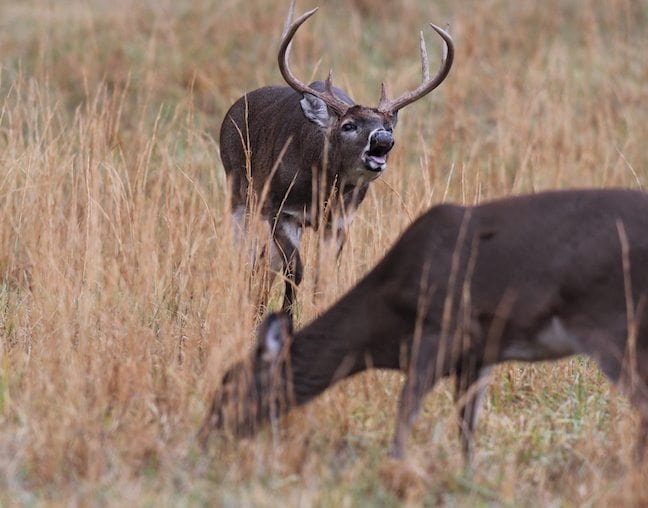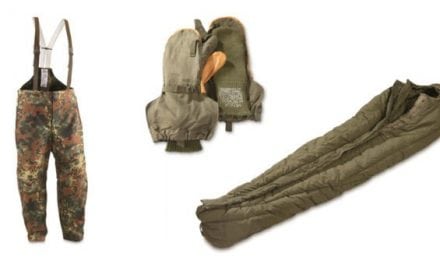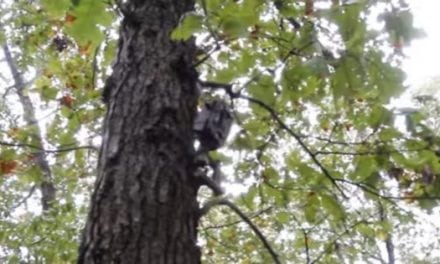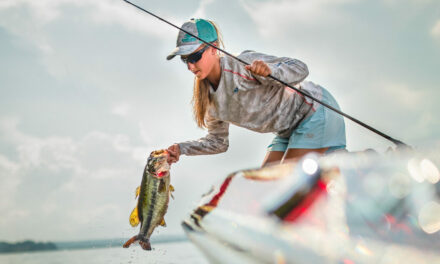Parts of western Minnesota might not look like deer country, but the whitetails are there. Here are some tips to help you bag your own
When I get the chance to talk to deer hunters from other areas of the nation, it’s always entertaining to hear what they picture as Minnesota deer country. Northern woodlands of aspen and spruce, sprawling bogs and brushlands, hidden meadows, and forest tote trails all make their way into the image.
What seldom sneaks its way into the picture, though, is what covers at least a good half of our state — that special place I like to call “the Big Wide Open,” otherwise known as Minnesota’s Prairie Country. Look at a map of Minnesota and essentially make an “L” across the bottom and western thirds of the state and you have a pretty good idea of the expanse and dominance of this whitetail habitat type.

Parts of western Minnesota might not look like deer country, but the whitetails are there. (Photo by Ron Sinfelt)
While I do plenty of deer hunting myself in the classic Central and Northern Woodlands, along with some in our Southeastern Blufflands (a whole ’nother story!), it is the prairie that makes me feel most at home for deer hunting. And it’s that way for many Minnesota hunters, whether we live and hunt there, go home every fall to chase the whitetails we grew up with, or make special visits just for our hunts.
But hunting prairie whitetails takes a special mindset and approach. The deer of the Big Wide Open operate under a different set of rules than their woodland counterparts. If you’re looking for success with bow, firearm or muzzleloader on prairie bucks and does this fall, it pays to tailor your strategy to the surroundings. These tips should help.
BOW SEASON — EARLY
Bowhunting can be challenging on the prairie, especially early in the season when all the crops are up and water is abundant. Whitetails have centered in on a tight home core range for the time being, and they don’t have to move much to get what they need. But this is a prime time to arrow an unsuspecting September whitetail. Here are some secrets.
Create Quiet Approach Lanes
After setting a stand, clear a final, silent approach to your setup. Absolute stealth during the final 20 yards or so of your approach is an essential detail you can control.
Use the hand saw to cut any brush in the way, and the pruning shears to trim out horizontal branches and twigs that could swish or slap against clothing. Employ the garden rake to clear a path to your tree or elevated stand. Do this work before the season and you should still have a pretty quiet approach come hunting season.
Plan Covert Approaches And Exits
Early season setups often focus on situations revolving around feeding, so it’s important to plan a smart route to your stand that won’t disturb the deer you are going to want to hunt.
Most early season hunting is done during the late afternoon and evening; this dictates approaching your stand from the feeding area, since the deer are probably beyond it. If you’re conducting a morning hunt, make a plan for coming in the “back door.” Avoid the feeding grounds and execute your movements under complete pre-dawn darkness.
In the same fashion, you need to think through and identify your no-impact exit route, especially for those evening hunts. Minnesota prairie deer will see you coming otherwise.
Hunt Water
Early season isn’t just for hunting the feed, and you don’t have to limit your hunting to just evening and early morning sessions. One of the best places to set a stand is near a water source surrounded by cover — a place that prairie whitetails feel safe venturing for a late-morning drink. The hours of 9 a.m. to 11 a.m. are prime for that kind of watering activity, as is the late afternoon.
Every hunting spot is different, so you’ll have to figure out where your water sources are. Three of my top water locations include a creek crossing, a spring at the base of a hillside, and a shady trail in the willows along a clearwater slough.
BOW SEASON — MIDDLE
By the time the second week or so of October rolls around, the Minnesota prairie is changing. Farmers are harvesting crops, and the landscape is moving toward November. Prairie whitetails shift their patterns. Some hunters like to call this the October lull in Minnesota, but it’s not as much of a lull as it is a changeover. Whitetails adjust their core range and alter their patterns, and hunters must change with the times.
Employ A Decoy
October is the perfect time to get some use out of that deer decoy. Your local whitetails probably haven’t seen one yet this year, and the first time can really get the deer’s attention up and their curiosity chugging. Bucks are ready for breeding now. The curiosity factor and the breeding urge call for an antlerless decoy.
If you’re in the market to shoot an antlerless deer for the freezer, which I always am, a doe decoy can aid in that job. Most groups of antlerless whitetails that are hanging around together in October are family groups. Adult does will come check out the newcomer to their territory, offering you a shot.
More G&F Stories on Deer Hunting
- Whitetail Deer: 4 P’s You Need to Consider
- Tag Your Bow Buck Early: Here’s What to Do
- The Art of Bowhunting Deer All Season Long
Place decoys on field edges and at other highly visible spots where traveling or feeding deer can see them. That visibility is key, and it’s usually not a problem on the prairie! Set up so the wind is blowing from the decoy to you, but also make sure you can swing and shoot crosswind, as bucks and does alike often sidle in, trying to get the breeze in their favor, and you’ll need to make your shot before they circle downwind.
Deer Talk
You can drum up some October action by making deer sounds. That approach works for two reasons. One, bucks are as attracted to audio breeding cues as they are to olfactory ones. Two, doe talk can get antlerless deer coming in, if you have a doe tag you want to fill.
As the month wears on, you might do more (and more aggressive) grunting and buck challenges. But earlier on, the goal is to make doe talk such as these sounds.
- Doe Estrus Bleats: The sound a doe makes when she’s ready to breed. October bucks are interested in some easy action.
- Fawn Bleats: Good any time, but especially in October, for calling in mature does.
- Fawn Distress Bawls: May bring in curious does for a look.
BOW SEASON — RUT
By the time late October and the week or so before gun season hits, the bucks start swinging into action in pursuit of does. This is the time the prairie bowhunter lives for! If cool weather coincides with this portion of the calendar, you might find a buck cruising any time of day.
Now is the time to hunt travel corridors. Drainage ditches, fencelines, and grassy swales connecting different coverts are all prime places to set up a stand and wait out the whitetails.
Because the country is so big, our prairie bucks must travel far and wide to find receptive does. That’s why it’s important to hunt the whole day on the prairie. Throwing some level of caution to the wind, bucks of the Big Wide Open will cruise on through mid-morning, high-noon and even mid-afternoon, without a qualm. Don’t limit yourself to morning and evening sits.
GUN HUNTING
Minnesota’s firearm season is my favorite time to hunt prairie whitetails. Part of the attraction is tradition, to be sure. There’s nothing like a farmhouse camp on the eve of the hunt, sitting around with old friends, discussing hunts past and dreaming up schemes for shooting whitetails tomorrow.
There are two main ways to shoot that prairie whitetail.
Stand
Most Minnesota prairie gun hunters wait for their whitetails, and that’s an excellent plan. It’s tough to sneak up on a prairie buck, and your odds go way up when you plunk down at a good feeding area or along a travel corridor.
One if my favorite stands is in an abandoned tree lot that used to be a farmstead. An old windmill still stands there, and the surrounding prairie grass seems to grow especially thick, great for attracting whitetails escaping pressure from other places.
Another productive stand is in the willows along the far side of a prairie lake. The cover links a rare wooded area to the north, to a plot of CRP grass to the south, and then a creek bottom. Whitetails travel the corridor while rutting, and while escaping hunting pressure on a nearby waterfowl area.
Push
One of the most exciting ways to shoot prairie whitetails is to team up with some partners and push sloughs, prairie grass, farmsteads, creek bottoms, ditches and swales, and wetland edges. Pushers need to get in the thick stuff and do their work. Posters need to shoot straight. And most especially, everybody needs to be safe and know the whereabouts of each hunter in the group.
MUZZLELOADER TIME
To shoot a late-season whitetail, you must first locate the thermal cover and high-energy forage that cold-weather deer require. Then add in ample portions of grit and determination, plus painstaking attention to detail to assure that your muzzleloader is ready for action.
Whether you sit and wait them out, or get out with a few buddies and do some pushing, sometimes the name of the muzzleloader game in Minnesota is just making sure your gun goes off. The prairie wind and the dampness can do a number on frontloaders, and so it pays to expend extra attention on the details.
Traditional flintlocks experience the biggest challenge igniting, followed by caplocks and then modern primer-and-pellet muzzleloaders. Fortunately, you can help make sure your shot happens. Here’s how.
- Use alcohol to de-grease all the gun’s moving parts of oil and gunk. Give everything a light spray of Teflon oil, then wipe dry with a clean cloth.
- Make loading easy: Use a lubed felt wad between powder (or pellets) and bullet.
- Place a piece of electrical tape over your muzzle to keep snow and moisture out. Shoot right through.
- Wear gloves with the fingertips cut off so you can manipulate all the little pieces and parts (primers, nipples, nipple picks, powder measures) that go with muzzleloading.
- Expect hang time between trigger pull, ignition, and bullet-out-the-barrel. Consciously will yourself to hold on-target.
- Leave your firearm outside in the cold at night, but protected in a vehicle, woodshed or barn. Don’t bring your muzzleloader into a warm farmhouse, cabin or motel room where condensation can occur.
CONCLUSION
There’s just something about Minnesota prairie whitetails. They’re amazing for living in such a landscape at all — a place that is for the most part devoid of trees and “traditional” deer cover, but full of whitetails nonetheless.
When I see a Minnesota prairie buck bounding through the cattails, or a doe slinking through the grass, or a knot of white-tailed deer trotting across the corn stubble coming from and going to who knows where, I know I have found my deer hunting heart.
It wasn’t always that way. But the older I get, the more I yearn to feel the prairie breeze on my face, hear the swish of bluestem against a pant leg, see the bright stars and then the blue sky sprawling from horizon to horizon above — and wonder where I’ll find my next Minnesota prairie buck among the magnificence of it all.
The post Minnesota Prairie Whitetails in the ‘Big Wide Open’ appeared first on Game & Fish.















